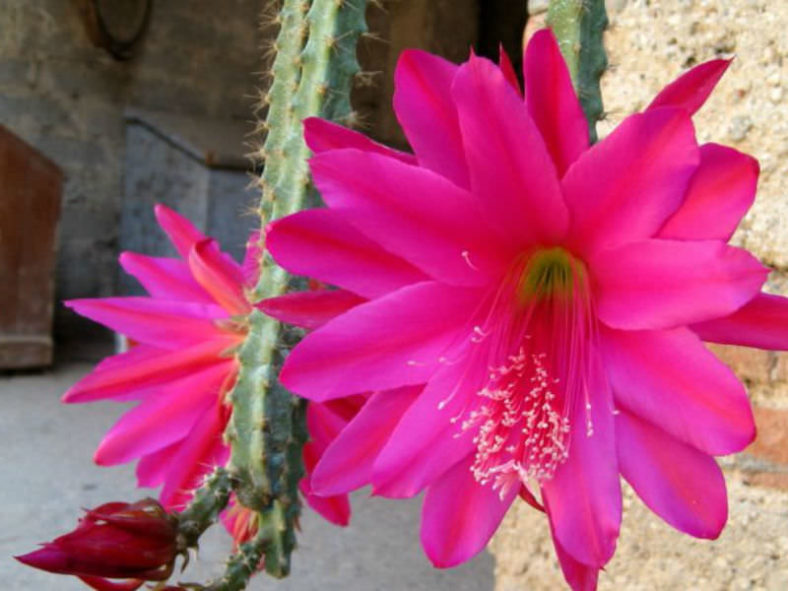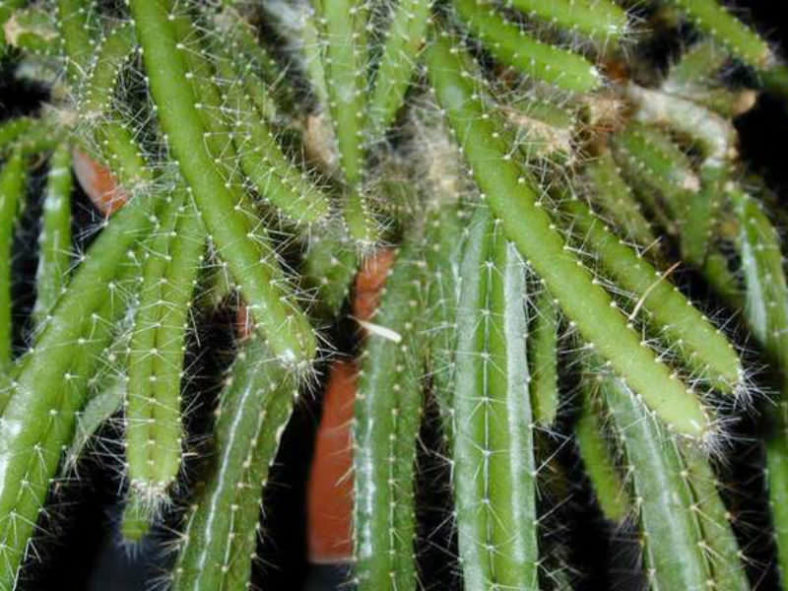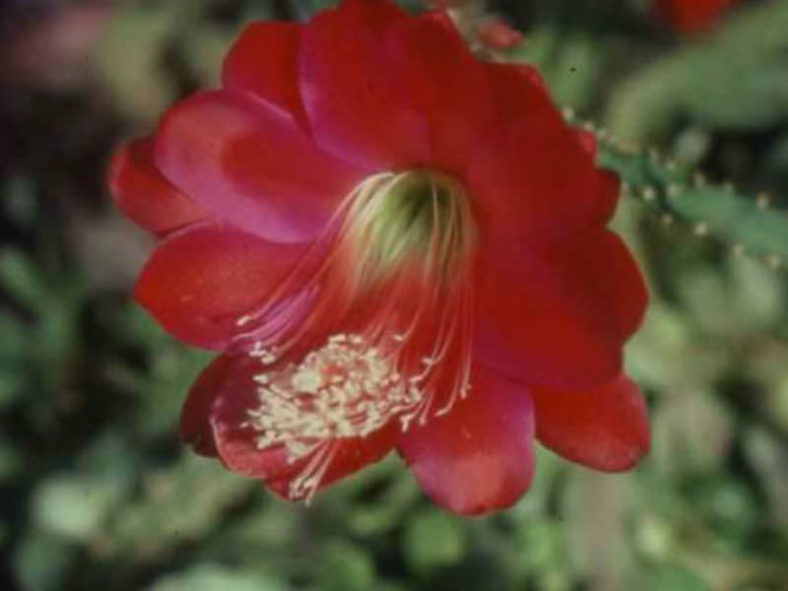Scientific Name
Disocactus speciosus (Cav.) Barthlott
Common Name(s)
Sun Cereus
Synonym(s)
Cereus speciosus, Heliocereus speciosus
Scientific Classification
Family: Cactaceae
Subfamily: Cactoideae
Tribe: Hylocereeae
Genus: Disocactus
Etymology
The specific epithet "speciosus" (pronounced "spee-see-OH-sus") means "good-looking, handsome, beautiful; splendid, brilliant; showy, specious" and refers to the spectacular, showy flowers of this species.
Origin
Disocactus speciosus is native to Central Mexico, where it grows as an epiphyte or lithophyte.
Description
Disocactus speciosus is an attractive cactus with erect or pendant, much-branched stems with 3 to 5 sharp, wavy ribs and clusters of spines along each rib. The stems are initially reddish but become dark green as they mature.
The flowers are pink to purplish-red, with a green tube with reddish scales and white hairs. They can reach a length of up to 6 inches (15 cm). The edible fruits are red, oval, and can grow up to 2 inches (5 cm) long.
Disocactus speciosus has been awarded the Award of Garden Merit by the UK's Royal Horticultural Society under its synonym, Heliocereus speciosus.
Hybrids

Hardiness
USDA hardiness zone 10b to 11b: from 35°F (1.7°C) to 50°F (10°C).
How to Grow and Care
Rat Tail Cactus is an easy-to-cultivate and relatively fast-growing cactus. Its trailing stems make this ideal cactus for a hanging basket. Line the basket with sphagnum moss before filling it with potting mix, and make sure it is hung where the prickly stems will not threaten the unwary. If Rat Tail Cactus is grown in a pot, hang the pot up or attach it to a high shelf. If it is left free-standing, it can soon be overbalanced by the lengthening stems.
To propagate, use either a 6-inch (15 cm) tip or a 6-inch (15 cm) stem segment. Allow each cutting or segment to dry for three days, then insert it approximately 0.8 inches (2 cm) deep into a small pan or pot filled with the recommended potting mixture for mature plants. Ensure that any stem segment is planted with the bottom end facing down. If this shallowly inserted cutting tends to fall over, it can be supported by gently tying it to a small wooden stick. The cultivation needs of cuttings are the same as those for mature Rat Tail Cactus, and rooting will occur within a few weeks. Rat Tail Cactus can also be grown from seed.
Learn more at How to Grow and Care for Disocactus.
Links
- Back to genus Disocactus
- Succupedia: Browse succulents by Scientific Name, Common Name, Genus, Family, USDA Hardiness Zone, Origin, or cacti by Genus
Photo Gallery
Click on a photo to see a larger version.

